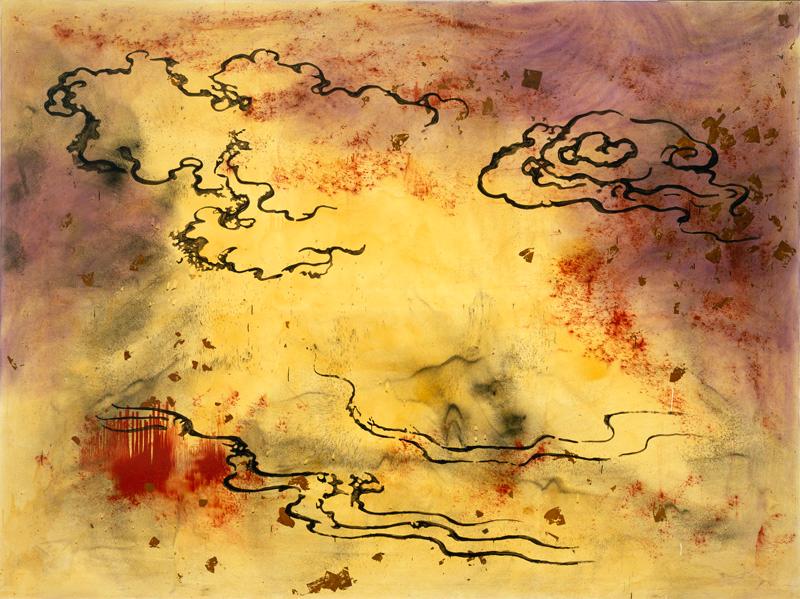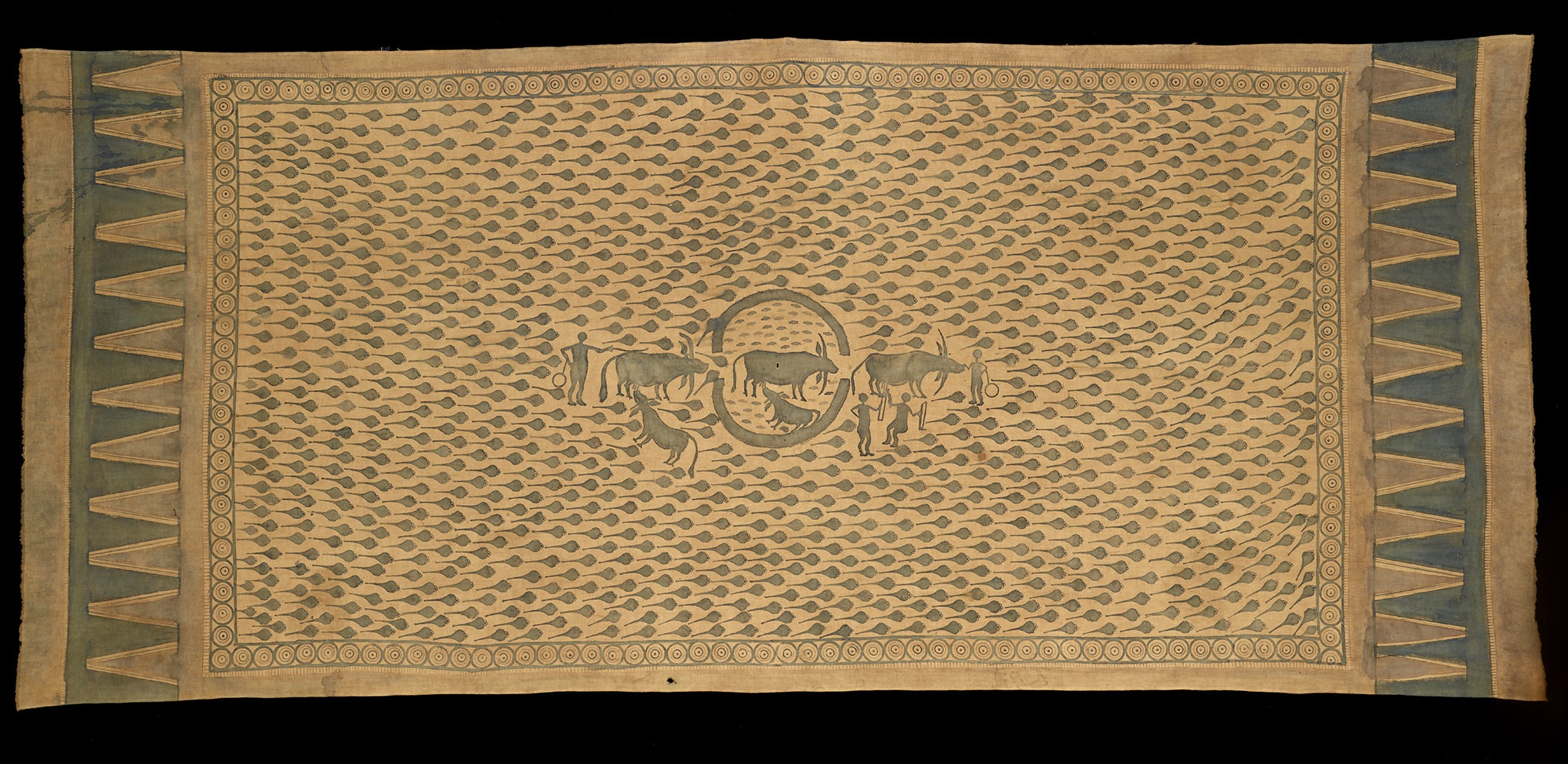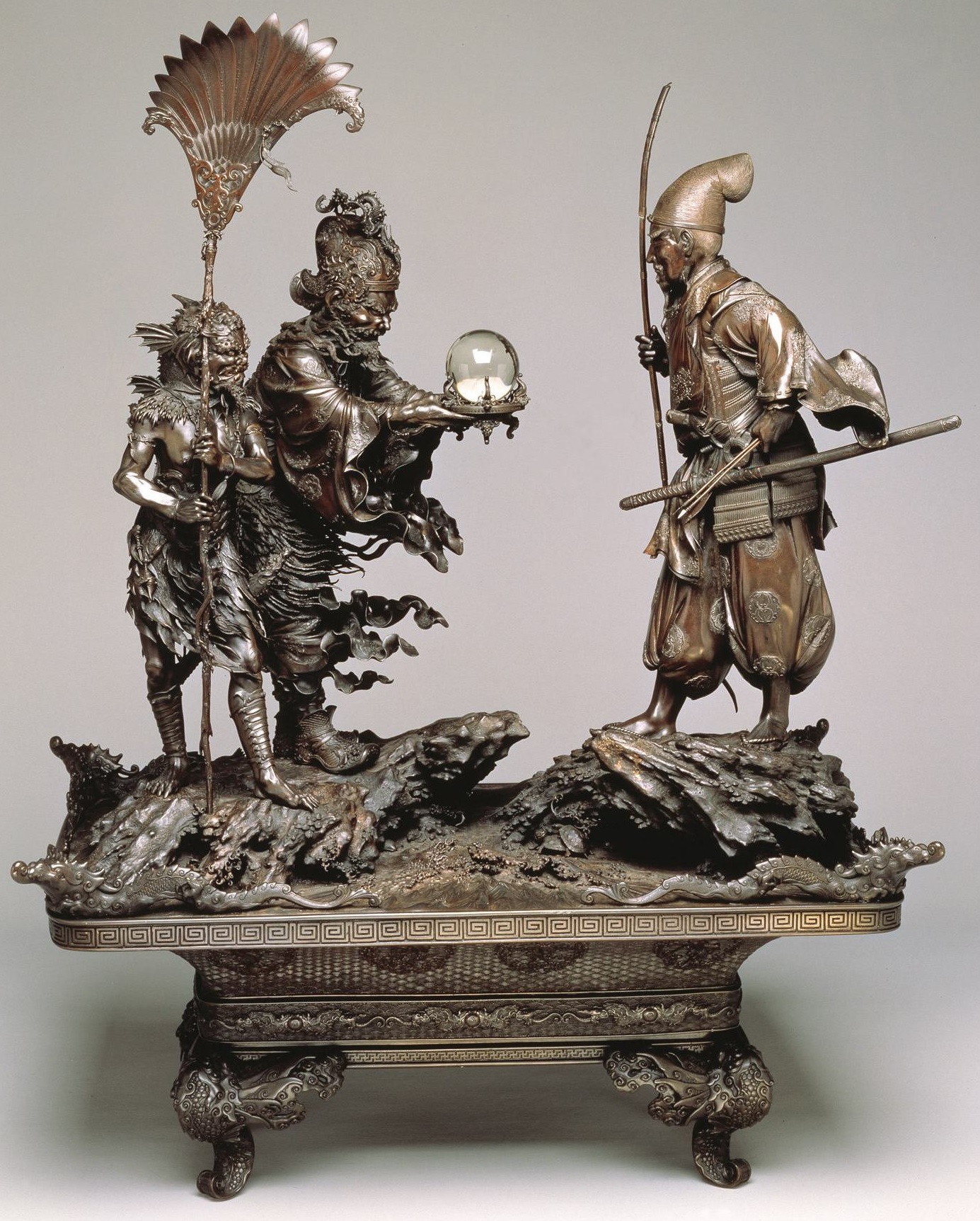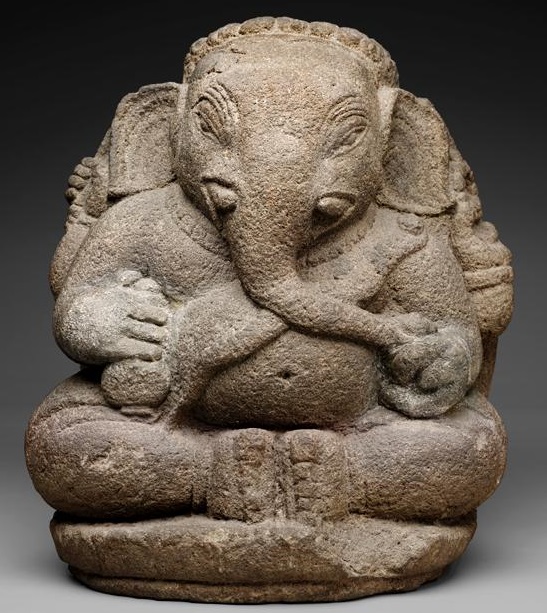Works of art are often seen as telling their own unique stories. However, artists can also use stories as inspiration when creating artworks. For example, the story “How Wang-Fo was Saved” inspired the German artist Sigmar Polke to create his painting Clouds (Wolken). Check out a version of this story below:

Sigmar Polke, Clouds (Wolken), 1989, Dallas Museum of Art, DMA/amfAR Benefit Auction Fund and the Contemporary Art Fund: Gift of Mr. and Mrs. Vernon E. Faulconer, Mr. and Mrs. Bryant M. Hanley, Jr., Marguerite and Robert K. Hoffman, Cindy and Howard Rachofsky, Deedie and Rusty Rose, Gayle and Paul Stoffel, and two anonymous donors
Once upon a time in a Chinese kingdom there lived an angry Emperor. When the Emperor was young, he was not allowed to leave the palace and explore the outside world. The young Emperor’s palace was decorated with the paintings of a very famous artist named Wang-Fo. Since the Emperor had never been outside, he thought that the world looked just like Wang-Fo’s beautiful paintings.
Finally, the time came when the Emperor was allowed to leave the palace. At first he was so excited, but his excitement quickly turned to disappointment. The real world was not nearly as beautiful to him as were Wang-Fo’s paintings. The Emperor believed he had been tricked and blamed Wang-Fo for his disappointment. He decided to punish Wang-Fo by tricking him as well.
The Emperor requested that Wang-Fo complete a painting he had left unfinished in the palace. Upon his arrival, Wang-Fo realized that it was trap. He immediately set to finishing his work, adding the sea at the bottom of a mountain. As he painted the water, the palace began to fill with actual water. Next, he painted a rowboat, and Wang-Fo could hear the oars splashing in the water. Wang-Fo quickly climbed into the boat!
The level of the water dropped and soon everyone in the palace came to see Wang-Fo’s finished masterpiece. In the painting they could see Wang-Fo in the rowboat slowly floating away from danger. Farther and farther down the river he rowed, until Wang-Fo disappeared and was never to be seen again. The End.
Concluding thoughts:
- If you were to create an artwork inspired by “How Wong-Fo was Saved,” what would you choose to capture?
- Do you think that Sigmar Polke’s Clouds (Wolken) effectively captured the story? Was he focusing in on a particular moment or theme?
- Are there childhood or family stories that you would want to commemorate through a work of art?
For more art-based stories, click on the links below:
Takenouchi no Sukune and the Dragon King of the Sea
The End!
Pilar Wong
McDermott Intern for Community Teaching



Of the four stories, I enjoyed “How Wong-Fo Was Saved” the best. Thanks for sharing the stories and the accompanying art.
I’m glad you enjoyed the stories! I love the idea of Wang-Fo being forever memorialized in his own artwork!